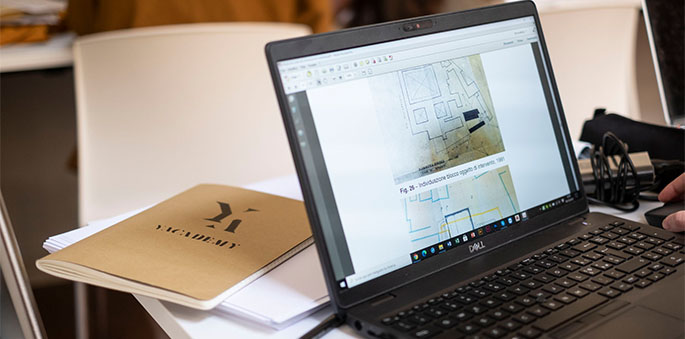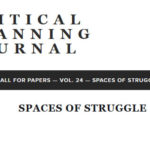With 9 years of experience and 7 Pritzker prize winners in the teaching staff, YACademy is one of the best post-grad training academies in architecture. Every year, YACademy recruits hundreds of students and collaborates with the best design studios in selecting the profiles which will become their trainees or collaborators. From such a vast experience, YACademy has developed these guidelines, which can be a useful tool for young architects.
Portfolio
- Less is more: it is a common mistake to believe that the most effective portfolios are the ones containing the highest number of projects. It is quite the contrary: a light, concise document is the most effective tool to impress and help the selection board, which often have to deal with hundreds of applications and documents which are way too long. Only the best projects must be reported in the portfolio: a selection will certainly be more impactful than a long series of projects which are not at the same level.
- Plan spaces for the eyes to “rest”: don’t fear empty spaces, which can be much more meaningful than a page full of information. Being able to design using empty spaces shows the ability of the designer and is very appreciated by any selection board.
- Copy! You are not in school anymore: you are allowed to copy from the best and even encouraged to do so. Don’t trust only your taste and take inspiration from the best magazines and architecture publications. Those who are going to see your work are used to high standards: layouts and languages should look professional to their eyes.
- Careful about the fonts: fonts are always a delicate subject, but the principle is always the same. Avoid unusual and strange fonts, and prefer simplicity, readability (not boring!) following in the footsteps of architecture publishing: a good font is a better decoration than any other element.
- Communicate through images: images are the best communication tool in architecture. Don’t overcrowd your portfolio with texts. Prefer strong and impactful images: the selection board are more likely to read a text if intrigued by a beautiful image, than look at a picture if intrigued by a text.

CV
- Less is more (again!): this is not only a composition or aesthetic principle. Thinking that your readers will be impressed by a lengthy document is a mistake. Synthesis really is a gift, and a much appreciated one. Select only the really meaningful events and achievements.
- Focus: only report the experiences that are relevant for the position you are applying to. Providing unnecessary information shows that you are incapable of selecting the most meaningful steps of your career.
- Pragmatism: give your reader useful tools to assess what you are saying. Report the exact degree grade, express your language knowledge precisely using international standards.
- Clarity: CV readers do not like treasure hunts. Make sure everything is clear and easy to find and that the document is not inscrutable.
- Not only content, but also form: even if your experience is excellent (content), a bad layout, strange fonts, and missing alignments (shape) annoy the readers and do not make a good impression.
Motivational letter
- It is not the CV: especially if you submit both, the motivational letter does not need to explain and list all your achievements and titles (which are already present in the CV). The goals of the two documents are deeply different.
- Go personal: the motivational letter is the preferred tool to show your personality, it is the perfect space to express your values, passions, your way of being. Don’t be scared to be authentic and talk about yourself: in fact, it would be a mistake not to do so, making it difficult for the reader to see your individual self.
- Be original: as the motivational letter is the space to express your true self, it should also be extremely original, to mirror the personality of the writer. A poem, a quote, even a cartoon bubble, can sometimes be more impactful than flawless presentations, which can sound too formal or boring.
- Go straight to the point: motivational letters that are too long discourage readers; you can say a lot in a few words: 200 is the right number.
- Looks also count: using space correctly, choosing the right headings, a smart font, a hand-written opening/closing, are etiquette elements that are going to be surely appreciated by those who will receive your letter.
- Proofread! Submitting a text with mistakes or typos does not make a good impression: given that the document is supposed to be short, containing mistakes shows superficiality.
Learn more about 2022 edition of YACademy: www.yacademy.it
Contact: studenti@yacademy.it
WeChat YAC srl









